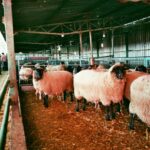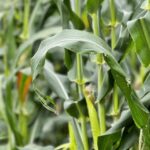The farm-to-fork concept emphasizes delivering fresh, locally grown food directly to consumers, bypassing intermediaries. This system not only promotes sustainability but also maximizes profits by creating a direct connection between farmers and end-users. Setting up a successful farm-to-fork system requires careful planning and the right equipment at every stage.
1. Planning Your Farm-to-Fork System
Before investing in equipment, farmers need to define their goals and understand their market. Key considerations include:
- Identifying the target audience: Local households, restaurants, or grocery stores?
- Choosing the crops or livestock: High-demand items such as organic vegetables, fruits, or dairy products work well.
- Establishing distribution channels: Online orders, local markets, or subscription-based delivery services?
With a clear vision, it becomes easier to select equipment suited to the farm’s needs.
2. Essential Equipment for Production
The foundation of a farm-to-fork system is efficient production. The right tools ensure high-quality yields and consistent supply.
- Tractors and attachments: Tractors with plows, harrows, and planters help prepare and cultivate the land efficiently.
- Greenhouses or tunnels: These enable year-round farming, especially for sensitive crops.
- Irrigation systems: Drip irrigation or sprinklers ensure optimal water use and improve crop health.
- Soil testing kits: These help farmers maintain soil fertility and balance nutrient requirements.
3. Equipment for Harvesting and Post-Harvest Handling
Minimizing losses and maintaining quality during harvesting and storage is crucial.
- Harvesting machines: These ensure timely harvesting of crops, reducing waste and labor costs.
- Sorting and grading equipment: Machines that sort produce by size and quality add value for consumers.
- Cold storage units: Refrigeration preserves freshness, especially for perishable products like fruits, vegetables, and dairy.
- Packaging machines: Proper packaging enhances product presentation and extends shelf life.
4. Equipment for Value Addition
Adding value to raw products allows farmers to increase their profit margins. Examples include:
- Food processors: Use these to create products such as jams, juices, or dried fruits.
- Milk processing equipment: Pasteurizers and churners for producing butter, cheese, or yogurt.
- Grain milling machines: Turn raw grains into flour or other processed goods.
5. Setting Up a Distribution System
Efficient distribution is key to a successful farm-to-fork system. The right equipment ensures timely delivery while maintaining product quality.
- Refrigerated delivery vans: Essential for transporting perishable goods over long distances.
- Delivery bikes or trucks: Ideal for smaller-scale operations catering to local consumers.
- E-commerce tools: Software for online orders and inventory management can streamline the sales process.
6. Marketing and Customer Engagement Tools
In a farm-to-fork system, connecting with customers is just as important as farming.
- Point-of-sale systems: Mobile POS devices make it easy to accept payments at markets or pop-up stalls.
- Social media platforms: Promote products and engage directly with customers.
- QR code labels: These provide transparency by sharing the product’s journey from the farm to the consumer’s table.
7. Sustainability and Waste Management Equipment
To align with the farm-to-fork philosophy, farmers should adopt sustainable practices.
- Composters: Turn organic waste into nutrient-rich compost for farming.
- Solar-powered equipment: Reduce energy costs and environmental impact.
- Rainwater harvesting systems: Improve water efficiency on the farm.
Setting up a farm-to-fork system requires the right combination of farming, processing, and distribution equipment. By investing in modern tools and leveraging technology, farmers can create a sustainable, profitable system that delivers fresh, high-quality products directly to consumers. With careful planning and a focus on efficiency, a farm-to-fork model can benefit both farmers and their communities.
Join 'Farmers Mag' WhatsApp Channel
Get the latest Farming news and tips delivered straight to your WhatsApp
CLICK HERE TO JOIN






